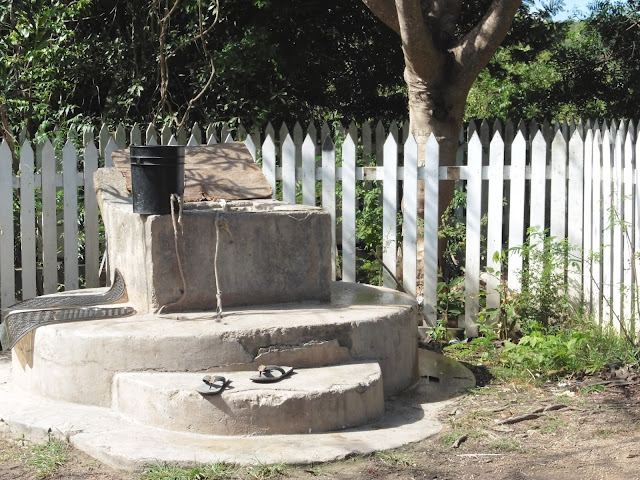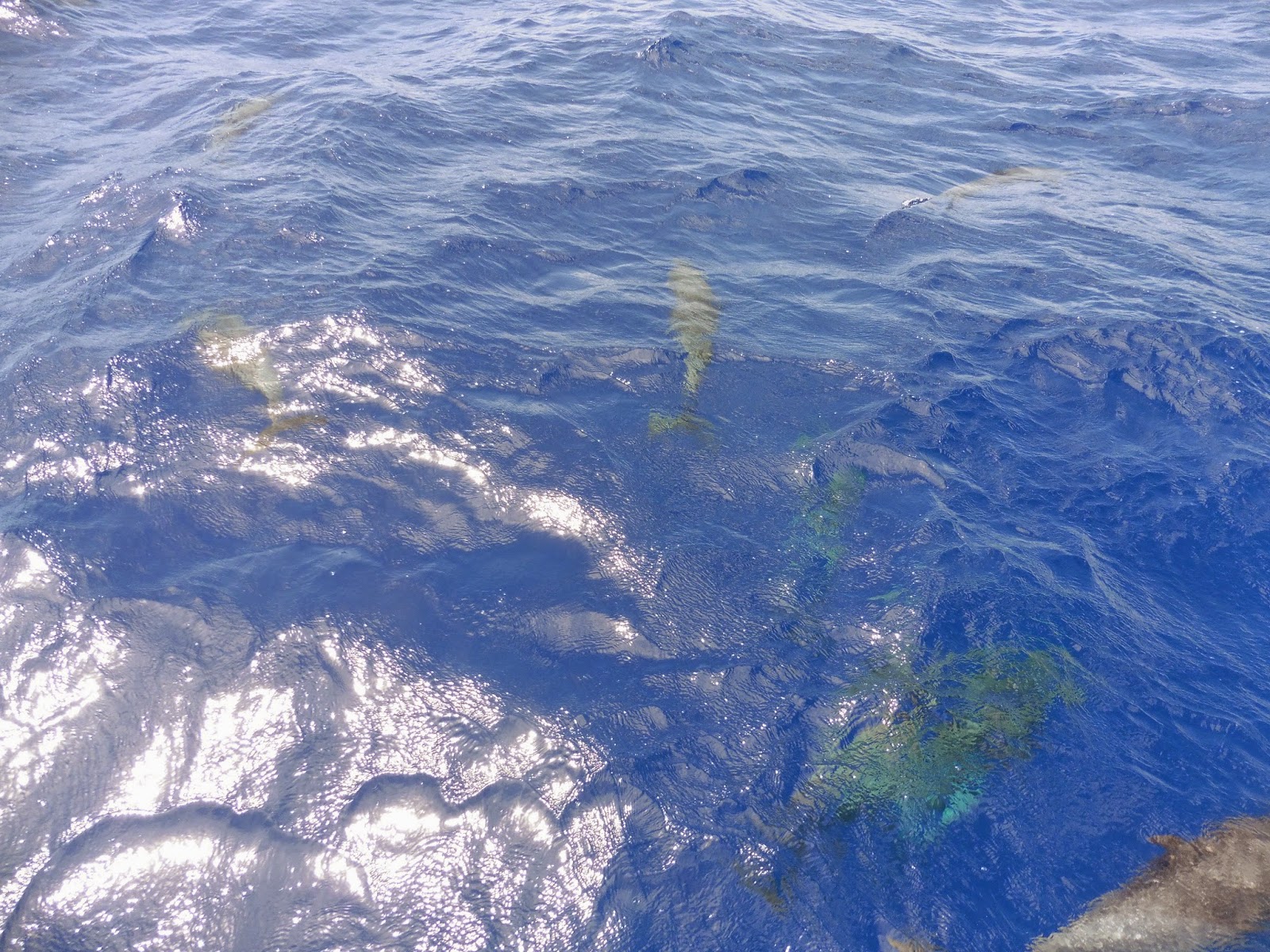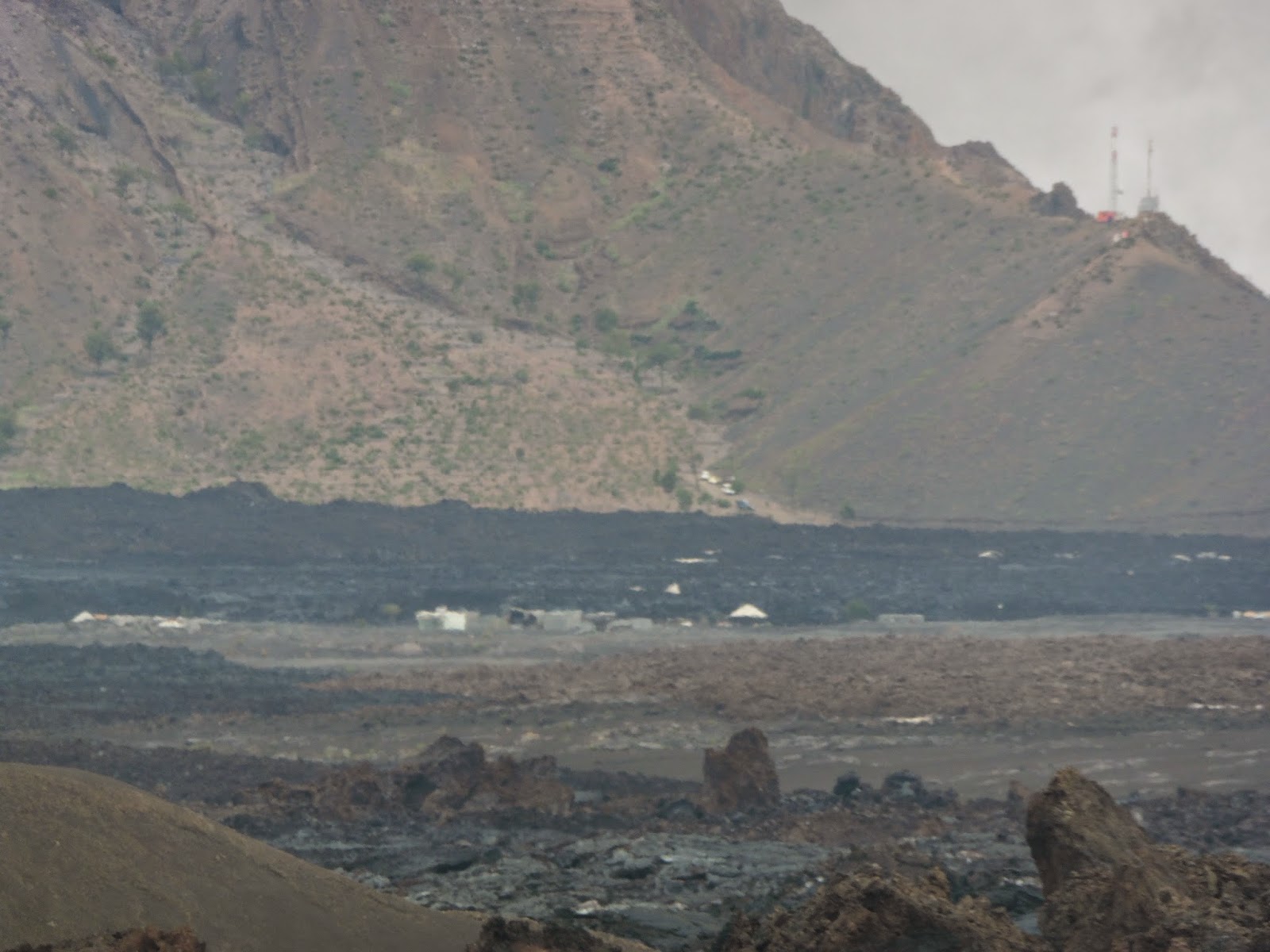29 March 2015
We are sitting in the Caribbean as I post this, as we did not have internet for quite some time, I am back peddling a bit.
From Santa Luzia, we had a brief sail to the bustling town of Mindelo on the island of Sao Vicente. Mindelo is the big city of the northern islands and as we knew Anneleize and Jabez's friends, on an English sailing boat would be there, we spent a few days in Mindelo before heading to one of the southern islands of the Cabo Verdes, Fogo.
Anneleize in the sailing dinghy, 'Bear Necessities' in Mindelo

Anneleize, Jabez and their friend Lochland rowing to Lochland's boat in the harbor of Mindelo, Sao Vicente, Cabo Verdes islands
Lochland in his sailing dinghy with Jabez, the two boys, and Anna in 'Bear Necessities', competing with the boys : who has the fastest sailing dinghy
The children had some good playing together and sailing in their sailing dinghy and we tried to get information about the island of Fogo. We knew there was a volcanic eruption on the island the end of November, 2014, but were unable to find anything more current on the internet to tell us if the island had been evacuated or if we would be able to stop and show Anneleize and Jabez a volcano. None of the locals I quizzed in Mindelo knew much about it.
I went to the Red Cross in Mindelo to ask if there was anything we could take on our boat to help with destruction from the volcano but they told me they didn’t need help, and were quite confused as to why I would want to do anything like that. A woman from the local sailor’s bar told us a Red Cross boat went to Fogo with supplies and aid, apparently overloaded, and sank in the harbor of Fogo, killing 15 people.
Armed with that pile of information, we sailed overnight to the island, seeing its conical shape against the backdrop of a golden sunrise.
Fogo in the distance, with a golden shadow sunrise
As we get closer, we see more definition of the island and more clouds
We anchored in the tiny harbor, a local guy swimming to the boat to take a stern line ashore. The next day we made the trek to the volcano.
We had two young guys driving us in an old beat up van. Creole is the favored language of the Cabo Verdes and we didn’t have any to use up. We tried for conversation in Portuguese and English, but the two guys were not that interested in conversing. We drove for an hour or so, around the southern side of the island and then began climbing. The road was a mix between being newly tarred and old cobblestones, and at times dirt.

Cobblestones

and fresh tar road
We drove until we couldn’t drive anymore because a large lava flow had passed over the road, covering it.

The lava flow covers the road

Volcanic lava, 4 months fresh
We got out of the van and walked to the flow, feeling the heat still coming through at places. Standing on top of the lava, we could even see many heat shimmers in the distance, though the rock had cooled enough to be solid. We walked up one of the hills to get a better idea of the destruction.
Layers of lave
Newly formed rock, a bit rough
There was a village that was completely wiped out, nothing but a few roofs were visible. A local man told us his government knew the volcano was going to erupt, but didn’t inform the public. He and his family were luck y to have gotten out when they did but they lost everything they had. We handed out clothes that the children had outgrown and an old second hand bicycle was well received. It seemed there was not much more we could do.
Roofs of houses in the distance, underneath lava
Inside the crater
Walking around the lava flow
We sailed the next day for Ilha Brava, the western most of the islands and our last stopping point before heading for the Caribbean.
Brava provided us with a lovely anchorage, steep hills surrounding it with a small fishing village peeking over the top of one of the hills. Again, dusty, barren, rocky and brown, I wonder how these hardy people can carve a life for themselves out of this desolate and harsh ground. If you didn’t know greenery existed, you wouldn’t long for it.
Arriving in the anchorage of Brava
Philip put into action a diving course for Anneleize and Jabez and after studying the dive books, they had their first open water practice, going to 15 meters.
Philip and the children take the dinghy for their first 'open water' dive
One of the fisherman from the village took special care with us, Jose, introduced us to his family, spoke to us about village life, we had a few meals together. He rows 2 or 3 miles around the corner, between Brava and Fogo, to do his fishing, and then rows back again. His wife takes the fish to the main village to sell it.
Jose and his family
We had 3 almost 4 days of a sirocco wind coming through from Africa. Because of the steep hills of Brava, when the winds finally reached our anchorage, having picked up speed coming over the island, the winds would race down to the water and whip it up, bringing more than 50 knots of gusts at a time. We sat with Abracadabra for this, not wanting to drag anchor, and even dug out our massive stern anchor, from the depths of the boat, and deployed it to keep us more secure.
The winds coming, roughing up the water
Philip sits on the boat with the winds pushing the boat against the anchor in Brava
When the sirocco comes, it brings with it sand and dust from the Sahara. It also obliterates the sun, making it a surreal disk in the sky.
These photos are from Gran Canaria, when we were also buffeted by the scirroco winds
To try to show how the sand and dust gets into the air and atmosphere and lays a find cloud between the blue sky and you
When it would have been a stunning day, with the scirocco winds, the skies turn grey
During this time we had a local fishing boat from one of the other Cabo Verdes islands, Santiago, that came into the anchorage to sit out the bad weather. We watched them anchor and re anchor over the course of 3 days. We also watched ourselves, checking where they were during the nights, so they didn’t bump into us.
They anchored with rope and we anchor with chain, and because of this the two boats swing differently. We swing in a fairly tight circle around our chain, while the Santiago fishing boat, well it is as if they swing hither, tither and yon. They were all over the place.
We were all ashore, at the rocky beach with Jose, we were watching that fishing boat moving around, and they were coming to close to Abracadabra. Philip jumped in the dinghy and raced out to the two boats, but arrived only after they had collided with our starboard side, putting a nice scratch into our brand new paintwork.
I did mention that we painted Abracadabra for the very first time, while we were on the hard in Portugal? It was a bit traumatic to go from gelcoat to paint, and we spent hours and days coming to this momentous decision. She is a 38 year old boat and the gelcoat was becoming a bit thin. So to have an old fishing boat make fun of our sleek new look, putting a reminding mark on the side of the boat, it was distressing and more than a little disappointing.
We were able to get fresh vegetables from the local gardens, a stalk of bananas as well, and Jose helped us to top up our water tanks before we began our crossing to St. Martin in the Caribbean.





















































